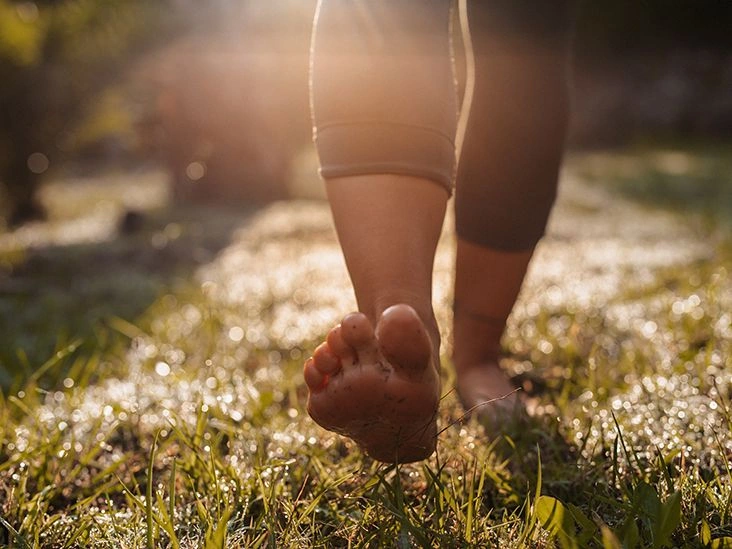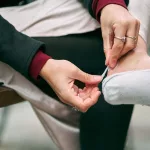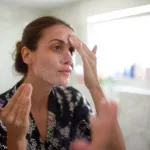People most often practice grounding outdoors by lying on the earth, walking barefoot, or immersing themselves in natural bodies of water. Alternatively, grounding mats, sheets, or other devices can be employed indoors to achieve a similar connection.
Grounding, also known as earthing, refers to activities that electrically reconnect a person to the planet. This can involve direct skin contact with soil or using a grounding product that establishes a conductive link between the body and the ground.

This therapeutic approach draws on earthing science and grounding physics to propose how electrical charges from the earth might positively influence the body. Note that this form of grounding therapy is distinct from grounding techniques used in anxiety management.
What the science says about grounding or earthing
Grounding or earthing is founded on the earthing hypothesis. It suggests the earth’s surface carries a negative electrical potential, so when skin makes contact, an exchange of electrons may occur. The body could absorb these electrons, which are proposed to neutralize free radicals.
Research on grounding is still limited, with relatively few independent, high-quality studies investigating its effects. Nevertheless, guided by the hypothesis above, some investigators have examined grounding as a potential therapy for inflammation, heart health, muscle recovery, chronic pain, and mood disorders.
An earlier trial from 2018 involved 16 massage therapists in a controlled study that evaluated the effects of working and sleeping while grounded. After four weeks, participants generally showed reduced stress.
Researchers noted shifts in average heart rate, average breathing rate, and other biomarkers, suggesting a possible calming influence of grounding on physiological measures.
Likewise, a small 2019 study looked at grounding in 16 adults employed as massage therapists.
These therapists had commonly experienced physical and emotional strain and pain from their demanding work. Following one week of earthing therapy and at a later follow-up, participants reported reductions in pain, stress, depression, and fatigue.
Both of these studies have notable limitations. Small sample sizes restrict the ability to generalize findings, and neither accounted for differences in sex, body composition, or environmental factors that could influence stress and relaxation. The 2019 trial also depended on participants’ self-reports and did not control for potential placebo effects.
A more recent investigation involving 21 people with diabetes reported that one hour of grounding per day for a month sped up wound healing, a common challenge in this population.
A 2022 quasi-experimental study of 20 preterm infants in Indonesia found that one hour of grounding daily for 30 days shortened the duration of acute respiratory infections in these babies. Further studies are necessary to clarify grounding’s effects on children.
Overall, many grounding studies are small and rely partly on subjective outcomes, such as self-reported benefits or self-applied grounding sessions.
Types of grounding or earthing
Common practices promoted by earthing proponents include:
- Walking barefoot: Strolling without shoes on grass, sand, or mud allows the skin to meet the natural ground, which is believed to transfer grounding energy.
- Lying on the ground: Rather than walking, some people lie down on soil or sand so their skin directly contacts the earth. This can be done in a park or on a beach.
- Immersion in water: Natural bodies of water, such as the ocean or rivers, may also serve to ground the body similarly to direct contact with the earth.
- Using grounding devices: When outdoor grounding isn’t feasible, people may use grounding mats or related products. Other available items include grounded socks, adhesive patches, and blankets.
Why do some people use grounding?
Although robust evidence is scarce, advocates claim grounding may help with:
- Chronic fatigue: In studies involving massage therapists, many reported decreased fatigue after four weeks of using grounding mats.
- Chronic pain: Research into grounding for exercise recovery found that users of grounding patches reported lower pain levels.
- Anxiety and depression: In earlier research, one hour of grounding therapy appeared to lift participants’ mood.
- Sleep disturbances: Massage therapists in the referenced studies also experienced longer sleep duration and fewer sleep interruptions after grounding therapy.
- Cardiovascular concerns: Some research suggested that ongoing, self-administered grounding might help lower blood pressure in people with hypertension.
Keep in mind that these studies are small and can have methodological limitations and potential conflicts of interest.
Risks of grounding
Many natural grounding practices, such as walking barefoot on grass or swimming in the ocean, are generally low-risk.
However, grounding mats and electrical devices can pose a risk of electric shock. It’s crucial to follow manufacturer instructions carefully and consult a healthcare professional before using such equipment—especially if you have a chronic illness, an implanted device, or recent surgery.
Grounding is not a cure. It may offer temporary symptom relief, but conditions like chronic fatigue, persistent pain, and anxiety usually have underlying medical causes that warrant professional assessment.
If you experience symptoms of these conditions, talk with a healthcare provider.
The bottom line
Grounding, or earthing, is based on the idea that the human body may absorb electrons from the earth’s surface, potentially helping to neutralize free radicals. Research is limited, but small studies have suggested possible benefits for inflammation, pain, mood, and other outcomes. More rigorous and larger-scale research is needed to confirm these findings.


















Leave a Reply
You must be logged in to post a comment.